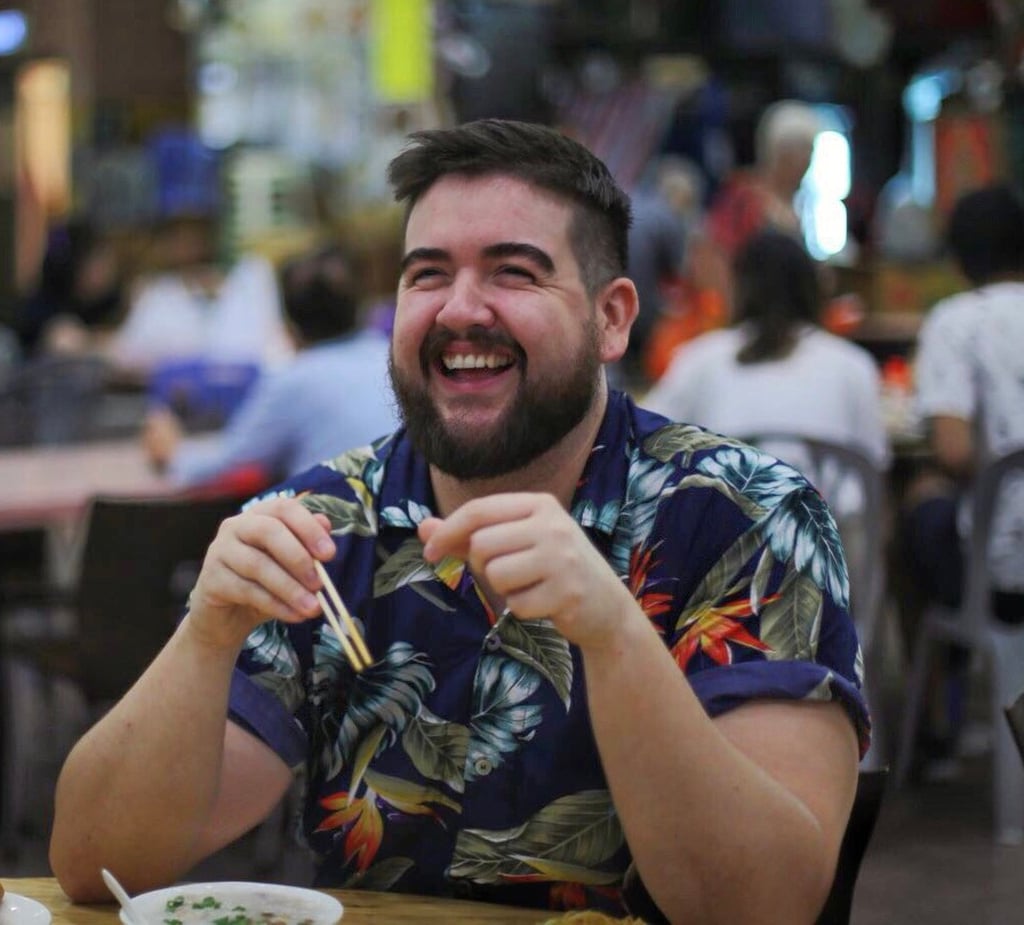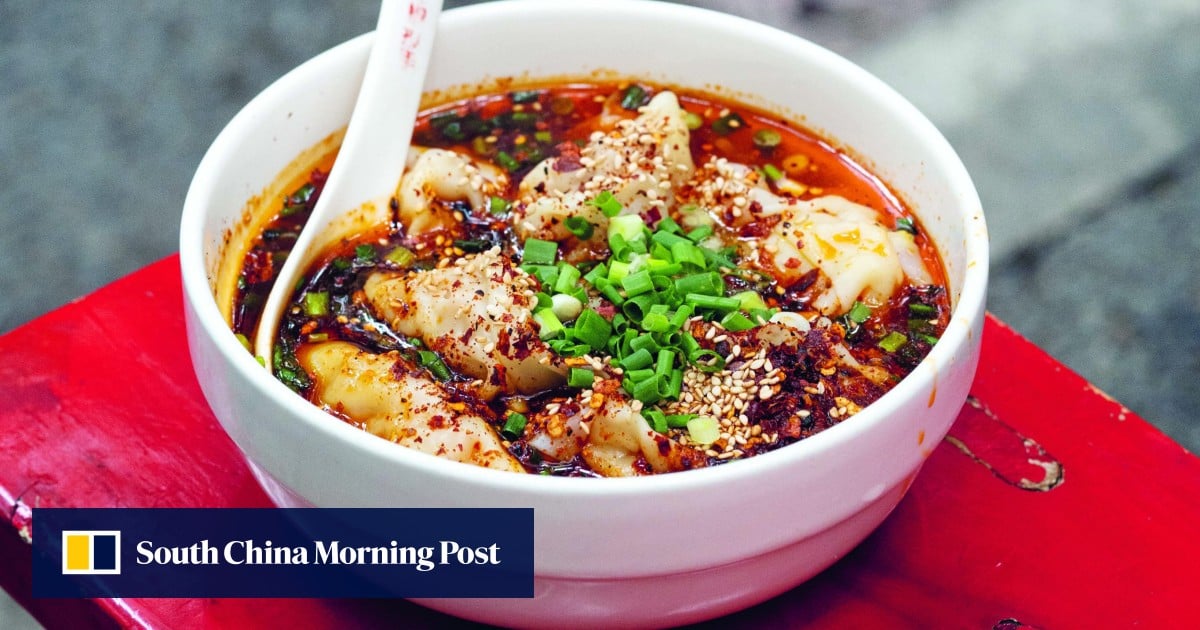The restaurant that sold them turned out to be closed, so he booked into a hotel for the night and early the next morning returned to get the shot.


“Because a little restaurant in Guizhou was closed, I was able to escape a lockdown and find myself walking through a village in the middle of nowhere, discovering a whole new world,” says Zee on a video call from Milan, Italy, where he now lives after five years in Shanghai.
“I came across a husband-and-wife team who make plum blossom cakes by floating a metal tray of coals over them on a kind of home-made crane, and I found a woman who makes tofu with a crystal – it was amazing. I had heard about it but never seen it.”
The crystal is gypsum, a mineral that alkalises soy milk, causing it to coagulate to form tofu. Gypsum is better known as a construction material, but is naturally food grade and has been used in China to split soy milk for hundreds of years.
Today, most cooks use powdered gypsum, but Zee says the douhua (tofu pudding) made with the crystallised version is some of the most delicious he has ever tried, “textural and gritty, paired with spicy cold dishes and white rice”.
Zee provides a recipe for making soy milk as well as douhua, along with handy tips for those home cooks less familiar with Chinese cuisine. He also provides a QR code, which opens to a video of the woman making tofu with the crystal.
Through this book you can see the craft of food made in the morning and how much can be learned from it
QR codes feature in 43 of the book’s recipes, and while other cookbooks provide links to videos of the chef preparing the recipes, this is probably the first to blend travel with cooking, offering readers a glimpse into the private kitchens of ordinary people or of small-scale entrepreneurs making their daily living, often in hard-to-reach places or on seemingly insignificant streets across China.
“I’m a quarter Chinese, but I don’t look very Chinese. All along, gatekeeping and cultural appropriation were very much on my mind, and I didn’t want to claim to be the authority. I wanted the book to showcase the expertise of the people making the dishes. The videos are, I think, the ultimate solution,” says Zee.
“You can meet these people now, too, and the experiential, behind-the-scenes access makes it more entertaining.”
What also makes these videos – along with the recipes – exceptional is that they are focused on breakfast, the most under-represented meal of the day when it comes to cookbooks, and the lowest in terms of prestige.
Zee says that whenever he meets people on his world tour to promote the book, the comment he hears most frequently is about how the subject of breakfast in China is so unfamiliar.

“Even when it comes to Chinese food, we’re focused on food of the upper classes, of banquets and the masters cooking them,” he says.
“Through this book you can see the craft of food made in the morning and how much can be learned from it – the speed of cooking, the handling of dough and the labour that goes into even simple-seeming things.
“In China and many countries in Asia, food is served and eaten in the blink of an eye but it can take days of preparation, such as chopping and making dough, batters or handmade noodles,” he says.

The recipe for douhua is one of few in the cookbook that captures an age-old technique; Zee was primarily focused on hunting out recipes that reflect the innovation of food in China.
He first came across jidan hanbao – little pancake batter “pucks” stuffed with a fried egg, a smidgen of pork and a healthy sprinkling of white pepper – at the breakfast market in Qingdao, Shandong province, but they can be found across China, especially near universities.
The burger-like snacks are inspired by McDonald’s sausage and egg McMuffin, and brushed with a sauce that Zee says is similar to HP sauce, a British condiment made with tomatoes and tamarind extract.
“Many of them are cooked together in a custom pan – young people are in a rush, they want to grab something and go rather than wait for their jianbing [Chinese folded crepe] that takes 45-50 seconds to make each time, resulting in a long line. You can also make more money from 20 at a time in a pan,” Zee says.
“It’s just one of the countless small examples of innovation in breakfasts, and food in general, in China, where efficiency and convenience rule, where everything is done à la minute, and where customers want transparency of service, the promise of hygiene with freshly cooked food, and a bit of the theatre of cooking.”

Another innovative recipe in Zao Fan: Breakfast of China is one that Zee created himself: coffee eggs.
Along with chapters dedicated to food categories such as noodles, grains, and sauces and pickles, Zee includes a chapter on the barely known breakfast items of the Xibonese people, originally from Jilin province in northeast China (where around 200,000 still live) but now also living in Xinjiang, on the opposite side of the country, after 18,000 soldiers were relocated there in the 1700s.

Zee includes recipes for milk skin and salty milk tea, soft and fluffy Xibonese bread, garlic chive and red pepper salad, and Xibonese slaw with lotus root, carrot and radish.
While dim sum culture originated in Guangzhou, southern China, it evolved at a greater pace and with more diversity and depth in Hong Kong.
Now Zee sees Hong Kong dim sum culture seeping back into mainland China, and bringing with it many dishes and traditions that did not exist there 150 years ago.
“As an independent colony, Hong Kong took on the crown of culinary superiority from post-revolution China. Hong Kong became an exciting, modern, global beacon of dining where the fabulous of the world would go to eat dim sum at The Peninsula hotel or at Maxim’s [Palace],” Zee says.

“Dim sum in China meanwhile evolved into a business meeting with a quick two bites and a cup before going back to the office – there’s no tradition of leisurely dim sum with the aunties on Sundays. A full meal at a dim sum restaurant here is like having dinner at Starbucks.”
Now, as the quintessential experience of dim sum with trolley service and a full range of dishes is becoming less easy to find in Hong Kong, it is becoming more popular in mainland China.
A branch of the popular Hong Kong dim sum restaurant Seventh Son has opened in Shanghai offering a full trolley service and high-quality dim sum classics.
“Locals now see dim sum as ‘Hong Kong food’,” Zee says.
“Perhaps we can see this evolution of Hong Kong’s cultural identity through food, this idea of cultural separation through food, as a way to weather the storm of rejoining China,” he adds.
Zao Fan: Breakfast of China is published by Bloomsbury.

